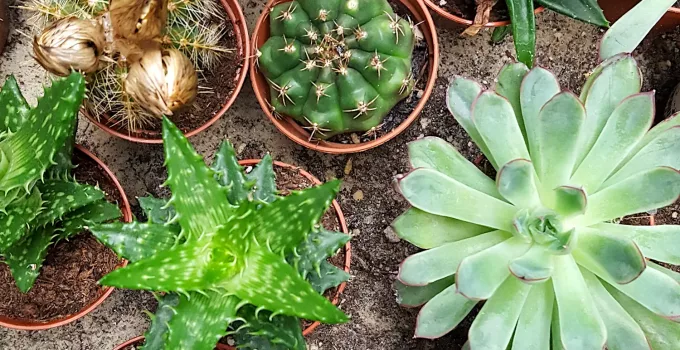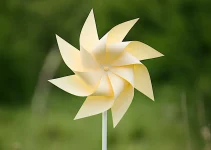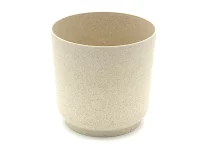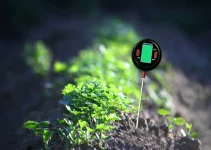If you want the answer to the question how often to water succulents to stick with you, just think of it this way: cacti are part of the succulents universe and they’re not exactly plants with roots that love to swim in water.
I wouldn’t exactly recommend using self-watering planters or watering globes if you are away from home for a week or two but you might need to establish a self-watering system if you are away from home for long periods of time.
Table of Contents
Succulents Are Drought-Tolerant
This is actually a very big universe that includes over 40 botanical families. If we were to use a few simple words to describe these families, those would be:
- tough
- adaptable
- drought-tolerant
- water holding properties
- little maintenance needed
To give you an even more broad picture on watering habits, I will tell you that succulents store water in leaves, stems, and roots. Cacti only hold water in stems. That’s one of the most important features that characterizes these plants.
And you get a lot of benefits from succulents.
Since there are so many botanical families, we can’t actually talk about watering recommendations for each variety. That will take ages.
But you should definitely check out how to take care of the specific varieties you’re growing because each plant has its own needs.
For example, aloe vera needs to be watered a bit more often than other varieties, like once a week or even more often if the weather gets really hot.
I just wanted to provide you with a general idea about how often to water succulents. Now, it’s time to get into details. Let’s establish a watering pattern that will enable you to grow healthy succulents.
How Often to Water Succulents: Winter, Spring and Summer
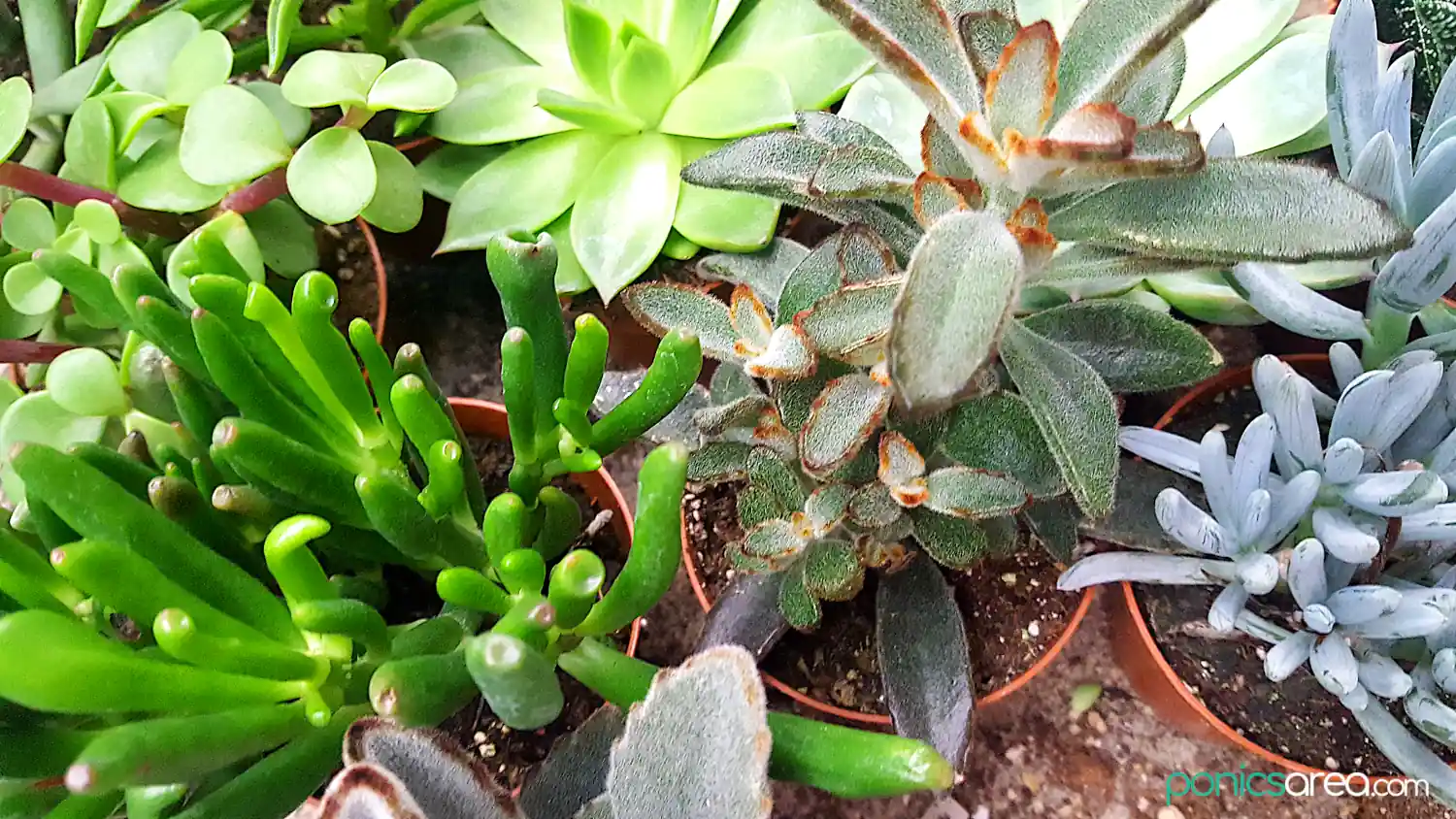
If you want to know how often to water succulents, it’s very important to pay attention to seasons and how hot/cold it is:
- spring and summer: on average, water succulents once every 1-2 weeks but only when the soil gets dry 2 inches down
- winter: water succulents once every 3-4 weeks or even less often, depending on the plant
- water before/after the hottest times (in the morning or in the late afternoon) to avoid quick evaporation
- in the garden, water them with a hose on the shower setting – 5 to 10 second on the soil around is enough
What happens during spring, summer, and winter?
Why did I mention that we’ll talk about how often to water succulents for the winter, spring, and summer months?
Because, in most regions, these three seasons are characterized by cold, mild, and hot weather.
If you’re living in a moderate climate with a mild rainy season, you might not need to water these kinds of plants at all.
Spring
A very large variety will bloom in spring. Or their leaves will turn different colors from the classical green. Check out my post on succulents with purple flowers or leaves if you want to know more about these beautiful plants.
For those beautiful mesmerizing things to happen, they rely on two major factors in the spring: watering and exposure to plenty of sunlight. Just like a lemon tree needs sunlight for green lemons to turn yellow.
If colorful leaves are turning green during spring or summer, the causes might be: not enough sun, too much water, a too rich soil or you’re using too much fertilizer.
Summer
During summer, temperatures can get really hot. If it gets too hot, the soil will dry out more quickly. That means you’ll have to increase your watering schedule and lessen it as soon as fall arrives or when temperatures decrease.
Winter
A large majority of succulent varieties are dormant in the winter.
That means that you seriously have to lessen on how often you water succulents in the winter compared to spring and summer.
They’re very sensitive to cold, frost can kill them. You should protect them with frost cloth or move them indoors, if they’re potted.
How often you should water small succulents
Those that are just starting to grow, should be watered once every 7 to 10 days. That rate will decrease as they grow larger.
When they’re small, they also prefer receiving gentle hosing, if you don’t have in-ground irrigation.
After immediately planting a succulent, don’t water it for the first week. Once that is up, give it a serious soak.
When You Should Water Succulents
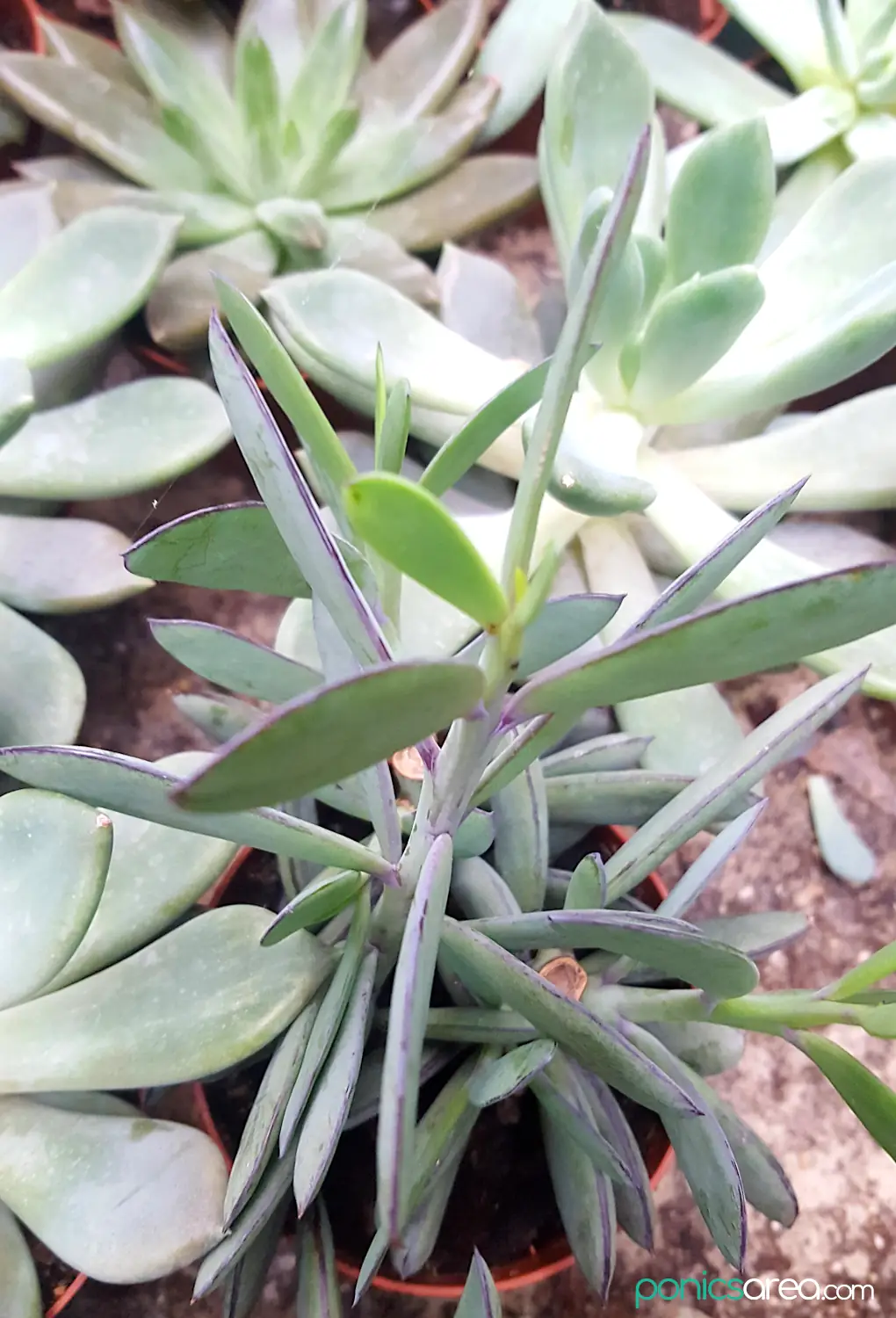
Test the soil with your fingers: the soil needs to be dry at least 2 inches down before you get it thoroughly moist again.
If you know when you should water succulents, then you’ll know how often to water succulents without anyone telling you things like once every 1-2 weeks when it’s hot and maybe once a month when it’s cold.
The plants in the succulent family likes their soil to get dry before they receive a thorough watering, just like lavender, rosemary and thyme, to give you a few common examples.
If you have experience with drought-tolerant herbs, you’ll know exactly how often to water succulents without any guidelines.
When the soil goes dry, you need to water succulents until the excess water pours through the drainage holes.
If you have a tray under the pot, empty the excess water immediately. Otherwise, the plant will absorb that excess, which can lead to root rot.
Best Soil for Succulents
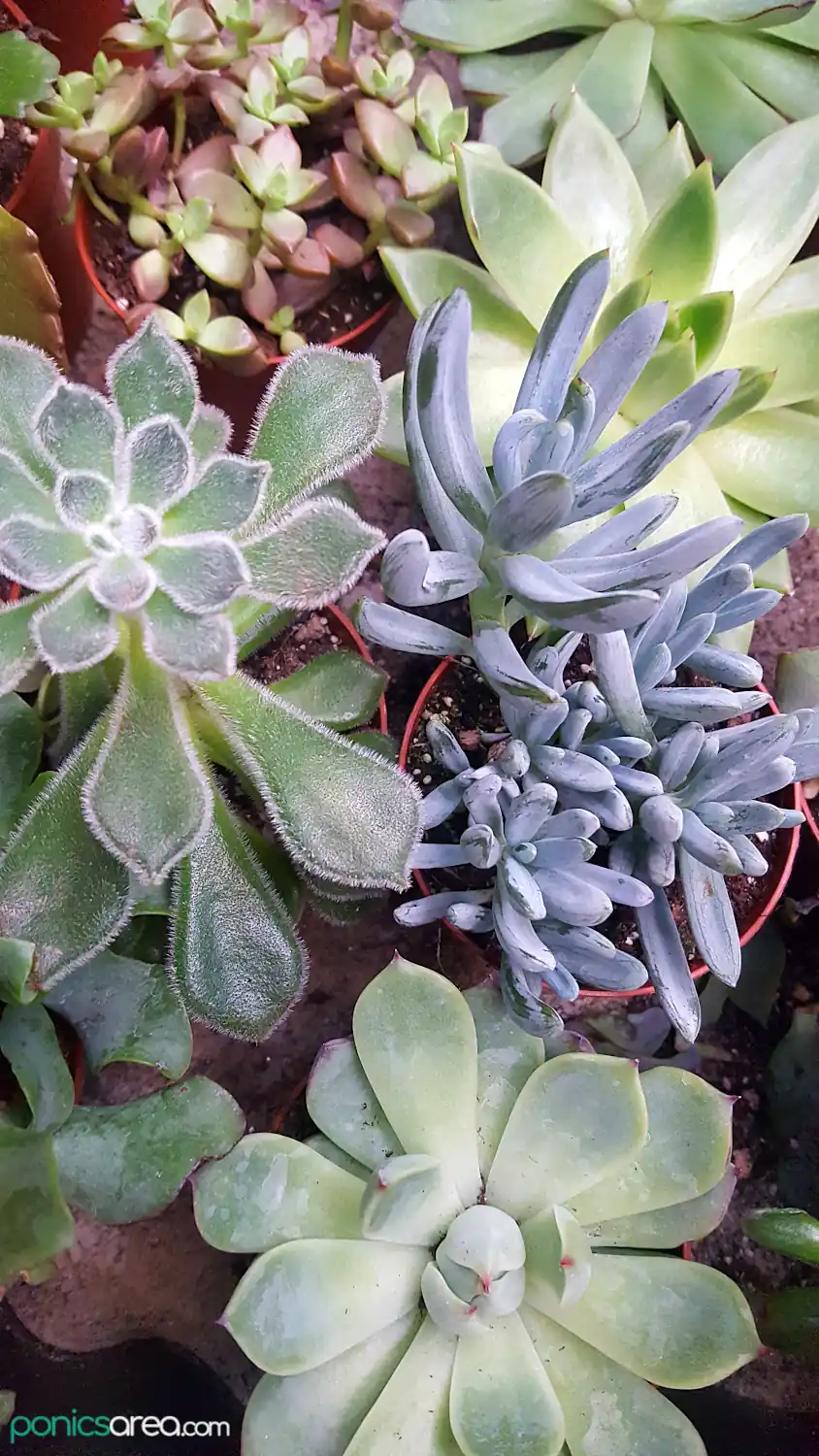
Why do I mention soil when we’re talking about how often to water succulents?
Because, if you don’t have the right soil, then all your watering effort can lead to root rot, which can kill the plant.
The best soil for succulents has the following characteristics:
- chunky or rough, rocky soil
- well-draining – this characteristic is crucial
- for gardens, you can test the drainage of your soil by digging a hole and filling it with water – if the water doesn’t drain in 30 to 45 minutes, you need to change its composition by adding sand, pumice or vermiculite
- use a soil with little organic matter because compost retains water for a long time – for succulents, the soil needs to drain in 1-2 days
- however, if it gets dry too quickly, you need to transplant into a larger pot
- cactus soil is a thing and you should consider using it for potted succulents, you can buy it from various places
- you can also make your own as a mix of: potting soil with pumice/vermiculite and small pebbles
- at the top, in the pot or in the garden, you can add mulch (prevents water evaporation in hot climates), moss or pebbles – read this article if you want to know what role these additions play
Use fertilizer twice a year
To avoid repotting because the soil no longer has the needed nutrients, you can use a fertilizer twice a year: in the early spring for blooming and in the fall as protection for harsh winters.
As a suggestion, you can use a fertilizer that’s high in calcium.
A seaweed fish emulsion fertilizer is a good choice, too.
Or one with a 5-5-5 or even smaller ratio.
If you want to keep it simple, use an all-purpose plant food that works perfectly for absolutely everything you’re growing indoors and outdoors.
There’s also a thing called Succulent Plant Food from different manufacturers.
Indeed, there are many choices when it comes to fertilizing these plants.
Overwatering and underwatering signs
Like it happens with all plants, overwatering and underwatering can manifest in wilted yellowing leaves.
The yellow leaves can also be a symptom for a lack of nutrients, you must also be aware of that.
When a succulent suffers from underwatering, the leaves will start to pucker, just like our fingers look after being wet too long.
If the leaves at the bottom are drying, that’s perfectly normal, it’s not a sign of anything. That’s just how the plant interacts with the earth. You can just remove them with your fingers or with a pair of scissors.
Overwatering will lead to root rot but it might be too late to catch it because we don’t have X-ray vision to see the roots through the soil. It can also manifest as wet spots on the stems.
Rot is actually the main reason for which I talked about growing in the right soil, about well drainage, notions which are just as important as knowing how often to water succulents.

